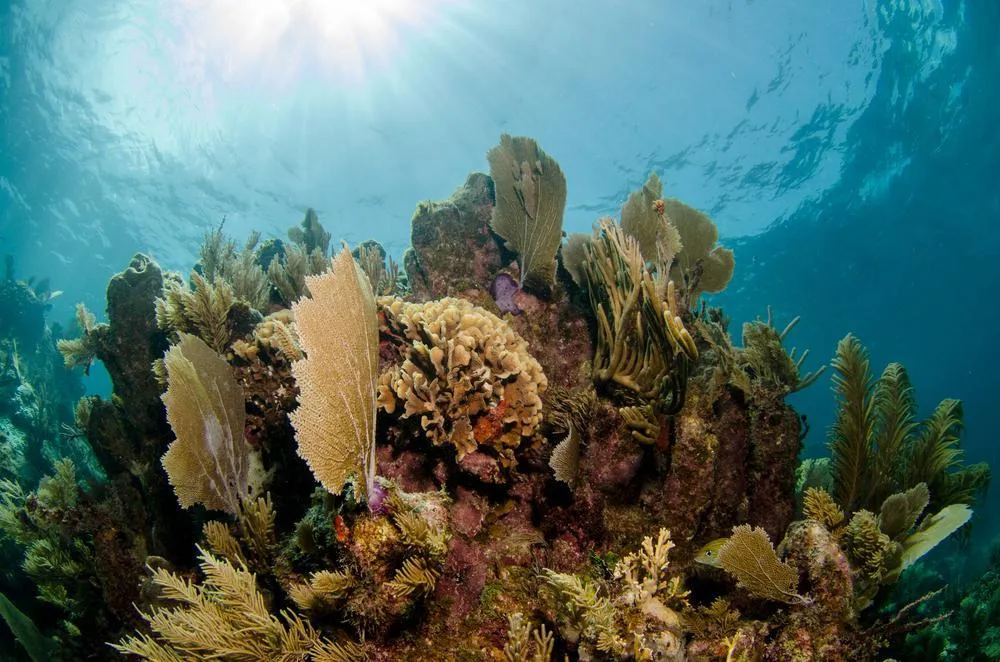Cheeseburger Reef is a popular spot for snorkelers and scuba divers in the reef-rich waters of Grand Cayman. The site earned its unusual name thanks to its proximity to a ubiquitous fast food restaurant. The coral reef here starts about 20 yards (18 meters off the shore and is marked by a pair of orange mooring buoys.
Scuba divers can spot stingrays and reef fish from the sandy seafloor, about 40 feet (12 meters) down, while exploring myriad tunnels and reef formations. Snorkelers have plenty to see as well, with coral heads within 10 feet (3 meters) of the surface and an abundance of snapper, butterflyfish, and sea turtles cruising the water column. While here, divers and snorkelers should also explore the shipwreck Cali, a freighter that sank near the reef in just 20 feet (6 meters) of water. Tour groups visit this picturesque undersea attraction by boat, kayak, and reef glider.
- The swim out to the reef may be difficult for those who aren’t strong swimmers; remember to bring a flotation device to assist you.
- Snorkeling with a guide is helpful for spotting and identifying any underwater finds.
- Never touch coral because you might damage the reef and the coral can cut or sting you.
Cheeseburger Reef is located in George Town, Grand Cayman, and can be accessed from the beach across from the downtown Burger King. It’s about a 10-minute walk north along North Church Street from the tender pier at the cruise ship port. Simply enter the water from the sandy beach and swim to the offshore marker buoys.
Scuba diving in Grand Cayman is possible year round. Expect rougher waters in September, if there’s a tropical storm brewing; from late September through November there is also a greater chance of hurricanes. You’ll encounter the largest crowds in the winter (December to February) but this is also when the weather is most pleasant and humidity is low.
Another popular snorkeling and dive site, Stingray City boasts vibrant coral reefs, clear waters, and some of the largest rays in the Caribbean. It’s only accessible by guided tours. Although the rays are accustomed to human visitors, trained guides demonstrate how to safely pet their skin and avoid their barbed tails.

